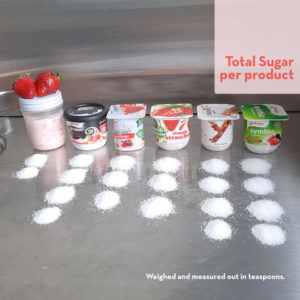
Written By Susana Sanchez, Holistic Health Coach
We’ve heard many times that what we put in our body directly affects how we feel emotionally and physically. But, as parents & caregivers, do we really act according to this premise?
Formerly, when a child or teen was suffering with anxiety, depression, or other mental health issues we had no idea how much the added sugars in their food and drinks were affecting their mood. Now, we know better. We know how critical healthy, nutritious food is to the brain & body as well as its role in our emotional & physical wellbeing.
A growing body of scientific evidence suggests that nutritional treatment may help prevent, treat, or improve depression, bipolar disorder, schizophrenia, anxiety, ADD/ADHD, autism, addiction, and eating disorders. And the scientific community is finally beginning to see how food is so strongly linked to brain health/mental health.
As you can see, there is a lot of scientific information on this topic, but the point is to get practical and start with little but significant changes, especially when talking about our kiddos. They are developing eating habits and taste preferences that will last a lifetime, so the younger we teach our kids to eat in a balanced way, the easier it will be for them to develop healthy eating habits for a lifetime. The longer we wait, the more difficult it is to change their cravings & habits.
Let’s start with some good news: You & your kids don’t have to eat a perfectly nutritious meal at every mealtime. If your kids really want to have fried chicken, a burger, a chocolate chip cookie or ice cream, it’s okay within the overall context of a healthy diet. This is because it’s not what you eat some of the time; it’s what you eat MOST of the time that makes a difference.
And the MOST important thing to avoid MOST of the time is added sugar. That’s where we will keep our focus today. Kids are having over 2 times more sugar than is recommended, with half of it coming from (often seemingly healthy) snacks and sugary drinks. BUT, if you don’t know how to decode when added sugar is in a food or drink item, it can be really difficult to know what those culprits are and what a healthier choice might be. Fear not, friends, we’re here with all the info, tips, and advice you need to help your family get started because we know you would love your kids to be healthier and more even keeled emotionally.
Tip #1: Know the difference between naturally occurring sugars and added sugars
Natural Sugar
Sugar is a simple carbohydrate that occurs naturally in foods that come from our earth. When it is unprocessed, sugar contains a variety of vitamins, minerals, enzymes and proteins. Whole grains, beans, fruits, and vegetables are examples of foods that contain natural sugars and, when chewed and digested, their natural carbohydrates break down uniformly into separate glucose molecules. These molecules enter the bloodstream, where they are burned slowly, smoothly, and evenly, due to their whole form along with their fiber content allowing your body to absorb all the good stuff – minus the physical and emotional roller coaster ride that added sugars will take you on.
Added Sugar
Refined table sugar, also called sucrose, is very different. Extracted from either sugar cane, beets or corn, it lacks vitamins, minerals and fiber, and thus requires extra effort from the body to digest. The body must deplete its own store of minerals and enzymes to absorb sucrose properly. Because added sugar lacks fiber & nutrients, it enters swiftly into the bloodstream and wreaks havoc on blood sugar levels, first pushing it sky-high — causing excitability, nervous tension and hyperactivity— and then dropping it extremely low— causing fatigue, depression, weariness, exhaustion & excessive hunger.
We don’t often realize the emotional roller-coaster ride we are putting our children (and ourselves) on when we serve them foods & drinks that cause a sugar-induced high/low. Kids can feel happy and energetic one moment and then, suddenly, they can feel irritable, sad, and cranky with no idea why….and then as their caregivers, we are hot on their trail to irritability.
Tip #2: Know sugar by all its sneaky code names
Added sugars will sneak into foods & drinks by many different names:
Tip #3: Be a label reader
Added sugar isn’t just present in cakes, cookies, and candy bars, it can show up in a wide variety of foods such as Chinese chicken salad, barbecue sauce, hamburger buns and salad dressings. Even food & drink sold as “healthy” can contain sugar. For example, a crunchy peanut butter Clif Bar has 21 grams of sugar, or 5 teaspoons…. compare that to a chocolate-glazed cake from Dunkin Donuts, which has 14 g of sugar or 3 teaspoons!!!! Surprised??
To get you started, we have included a list of Top Foods to avoid because they can come across as a healthy choice, but really are full of sugar:

Tip # 4: Know how to replace the foods that were sneaking high sugar foods into your kiddos diet
If avoiding these foods seems like a difficult task & you don’t know where to begin, we have a solution. We hope this “swap” chart below will help you get started!
| Swap this… | For this… |
| Sugary Drinks
|
Water, lightly fresh fruit flavored water, fruit infusions (add sliced cucumber, strawberries, mint), herbal teas, sparkling water. Home-made lemonade sweetened with monk fruit or stevia. Home-made green or vegetable juices
|
| Flavored Yogurts | Plain greek yogurt. Be creative for the toppings: cinnamon, berries, nuts, etc.
You can blend a piece of fruit with it. (mango or apple) or add a couple teaspoons of local honey
|
| Cereal and Fruit Bars | Home-made bars, rice cakes, whole fruits
|
| Breakfast Cereals | Oatmeals, chia pudding
|
| Cakes, pastries and ice cream | Frozen yogurts, half-banana and unsweetened peanut butter or sunbutter blended, home-made desserts* (there are plenty of recipes for these types of deserts…or find more info with us)
|
| Milk-sugar chocolate bars and white “chocolate” bars | Dark unsweetened chocolate. You can combine with banana or dates for some sweetness
or a dollop of peanut butter (sunbutter if your kiddo has a nut allergy)
|
| Buns, biscuits and pasta | Whole grain bread, rice, whole grain pasta, lentil or chickpea pasta etc.
*make sure to add some healthy fat (nut butter, butter, meat, cheese, etc.)
|
We hope this information will help you to jump off the roller coaster ride added sugar is taking you and your family on. Please text or call 713-526-4444 if you need more 1:1 help or coaching on making these changes in your home! I’d love to work with you.
_______________________________________________
References:
Amen, Daniel. “What Is Nutritional Psychiatry?” Amen Clinics, 14 January 2020,
https://www.amenclinics.com/blog/what-is-nutritional-psychiatry/. Accessed 4 June 2022.
“The bitter truth about added sugar.” Harvard Health, 1 March 2020,
https://www.health.harvard.edu/staying-healthy/the-bitter-truth-about-added-sugar. Accessed 4 June 2022.
“Reducing sugar – Food facts – Healthier Families.” NHS,
https://www.nhs.uk/healthier-families/food-facts/sugar/#rdas. Accessed 4 June 2022.
Rosenthal, Joshua. Integrative Nutrition: Feed Your Hunger for Health & Happiness. Institute for Integrative Nutrition, 2014.
Amen, Daniel. Change Your Brain, Change Your Life.